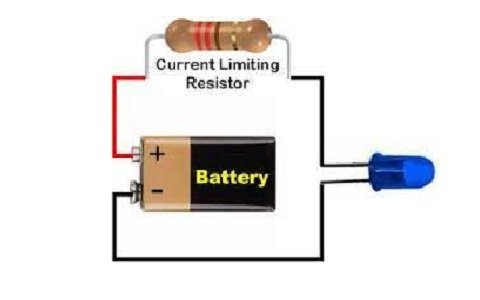Light Emitting Diodes (LEDs) are commonly used in various electronic devices due to their energy efficiency and longevity. When using an LED in a circuit, it is advisable to use a fixed resistor in series with it. Understanding why this is crucial requires a look at both the properties of LEDs and the role of a fixed resistor in the circuit.
LEDs are semiconductor devices that emit light when current flows through them. Unlike traditional incandescent bulbs, LEDs require a specific current and voltage to operate efficiently. If too much current flows through an LED, it may become damaged or have a significantly reduced lifespan.
Why is it Advisable to Use a Fixed Resistor with an Led
Yes, it is advisable to use a fixed resistor with an LED. Using a fixed resistor in a circuit with an LED helps to limit the current flowing through the LED to its safe and optimal level, thereby protecting it from damage due to excessive current or voltage. It also aids in maintaining the proper voltage across the LED, preventing a phenomenon known as “thermal runaway,” and enhances the overall lifespan of the LED. The incorporation of a fixed resistor is a straightforward and cost-effective solution that ensures the LED operates efficiently and reliably, making it a standard practice in electronic design.
Advantages of Using a Fixed Resistor with an LED
- Current Limiting: A fixed resistor helps to limit the current flowing through the LED to a safe and optimal level. LEDs are very sensitive to changes in current, and a fixed resistor ensures that the current stays within the desired range, protecting the LED from damage.
- Voltage Regulation: The resistor helps in maintaining the proper voltage across the LED. If the voltage is too high, it could lead to excessive current, which may harm the LED. A fixed resistor acts as a buffer, absorbing excess voltage and maintaining stability in the circuit.
- Preventing Thermal Runaway: LEDs can suffer from a phenomenon called “thermal runaway,” where an increase in temperature causes a further increase in current, leading to potential failure. A fixed resistor helps in stabilizing the temperature and preventing this condition.
- Enhancing LED Lifespan: By controlling the current and voltage flowing through the LED, a fixed resistor ensures that the LED operates within its specified parameters. This not only prevents immediate damage but also enhances the overall lifespan of the LED.
- Cost-Effective Solution: Fixed resistors are generally inexpensive components that add a layer of protection to the LED without adding significant cost to the overall project.
- Simplicity and Flexibility: Using a fixed resistor with an LED is a straightforward approach that can be easily implemented in various applications. It allows for flexibility in designing circuits that can accommodate different types of LEDs.
Conclusion
The use of a fixed resistor with an LED is a fundamental and wise practice in electronic design. It serves to protect the LED from potential damage due to excessive current or voltage and ensures that it functions efficiently and reliably. High school learners in South Africa studying basic electronics can appreciate the role of a fixed resistor in safeguarding LEDs and understand its vital role in various applications, from household lighting to sophisticated electronic gadgets. By grasping these concepts, students can become more adept at designing and working with electronic circuits, fostering a deeper understanding of technology that permeates everyday life.

